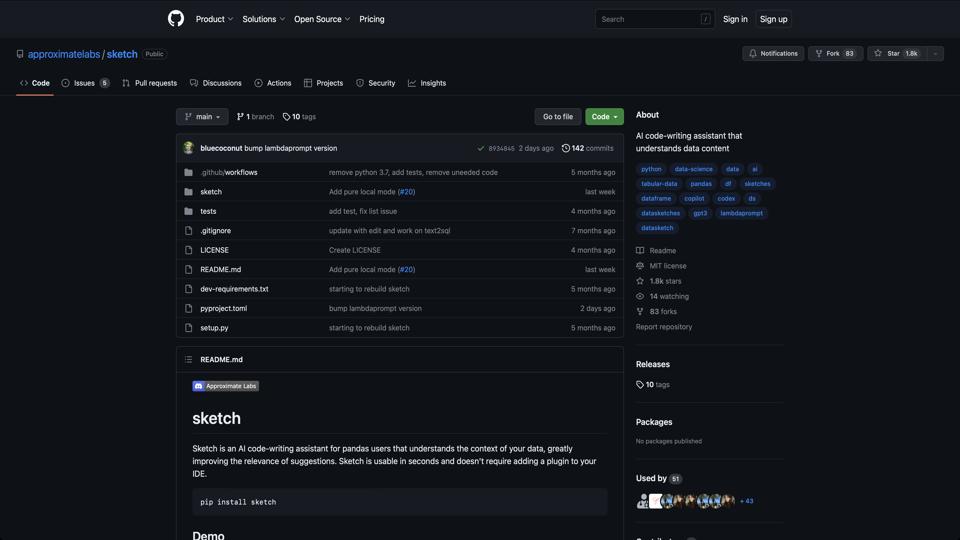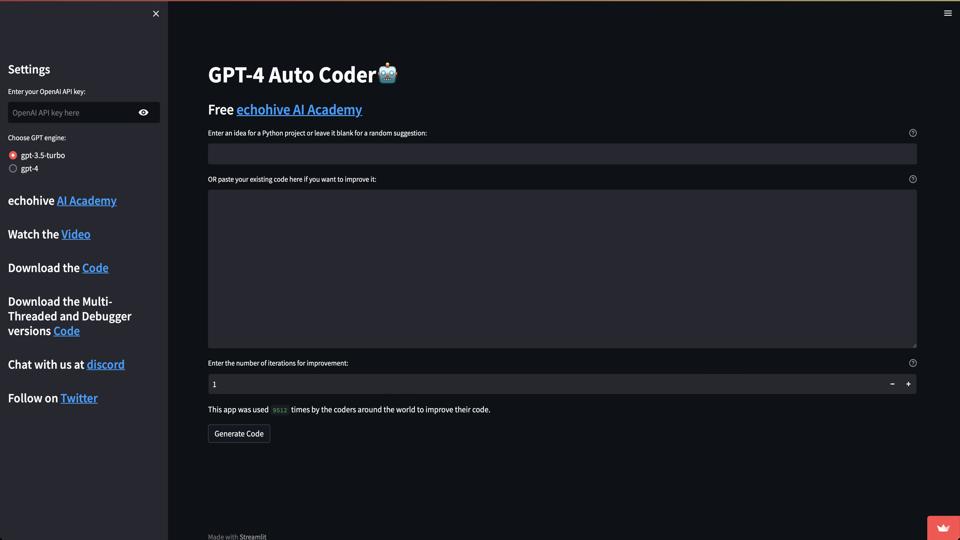Sketch
Overview of Sketch
Sketch is an open-source Python library developed by Approximate Labs, designed for streaming data summarization using approximate data structures known as “sketches.” These sketches enable efficient processing and analysis of large-scale datasets by providing probabilistic approximations for tasks like counting, frequency estimation, and cardinality estimation. The library is particularly useful for big data applications where exact computations are computationally expensive or infeasible. You can find the project on GitHub, where it has garnered attention for its simplicity and performance in data science workflows.
Key Features
- Variety of Sketch Types: Includes implementations like Count-Min Sketch for frequency estimation, HyperLogLog for cardinality, Bloom Filters for membership testing, and more.
- Streaming Support: Optimized for processing data in a single pass, making it ideal for real-time analytics and large datasets that don’t fit in memory.
- Python Integration: Seamless integration with popular libraries like Pandas and NumPy, allowing easy incorporation into existing data pipelines.
- Configurable Accuracy: Users can tune parameters to balance between memory usage, speed, and approximation accuracy.
- Extensibility: Open-source nature allows for custom extensions and contributions from the community.
Pros
- Highly efficient for handling massive datasets with low memory footprint.
- Easy to install via pip (
pip install sketch) and well-documented with examples on GitHub. - Active development and community support, with regular updates addressing bugs and adding features.
- Provides a good trade-off between accuracy and performance for approximate computing tasks.
Cons
- Approximate nature means it’s not suitable for applications requiring exact results; errors are inherent in sketches.
- Limited to Python ecosystems; no native support for other languages without wrappers.
- Learning curve for understanding sketch algorithms if you’re new to probabilistic data structures.
- Dependency on external libraries like NumPy, which might introduce compatibility issues in some environments.
Installation and Usage
To get started, install the library using pip:
- Run
pip install sketchin your terminal. - Import and use in Python:
from sketch import CountMinSketch. - Example: Create a sketch, add items, and query frequencies.
For detailed tutorials, refer to the GitHub documentation.
Conclusion
Overall, Sketch is a powerful tool for data engineers and scientists dealing with big data challenges. It earns a strong recommendation (4.5/5) for its efficiency and ease of use in approximate analytics. If your work involves streaming data or large-scale summaries, give it a try—it’s a valuable addition to any Python-based data toolkit.




